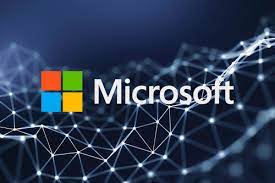Okay, here's a news article based on the title you provided. I will use search queries to gather the most up-to-date information on Microsoft's renewable energy investments.
Microsoft's $10 Billion Bet: Powering a Sustainable Future with Renewable Energy Investments
Microsoft is making significant strides in its commitment to a sustainable future, channeling billions of dollars into renewable energy projects and initiatives. The company's ambitious goals, including becoming carbon negative by 2030 and removing all historical emissions by 2050, are driving substantial investments in solar, wind, and other clean energy technologies. These investments not only aim to reduce Microsoft's environmental impact but also to stimulate the growth of the renewable energy market and support local communities.
A key component of Microsoft's strategy is securing power purchase agreements (PPAs) to ensure a steady supply of renewable energy for its data centers and operations. In a recent example, Microsoft partnered with Madrid-based renewable energy company Zelestra to purchase energy from two new solar plants in Spain. These projects, located in Zaragoza, Aragón, are expected to have a total capacity of over 95 MW and are currently under construction. As part of the agreement, funding will also be provided to Fundación Ecología y Desarrollo (ECODES), a non-profit organization, to implement sustainability initiatives in vulnerable communities within the region. These initiatives aim to expand access to sustainable infrastructure, promote economic inclusion, and build capacity within community-serving organizations.
Microsoft's commitment extends beyond simply purchasing renewable energy. The company is actively involved in developing and deploying innovative technologies to enhance energy efficiency and reduce its carbon footprint. For example, Microsoft is exploring liquid immersion cooling for its data centers, which can reduce energy consumption by up to 40%. The company is also investing in hydrogen fuel cells as a replacement for diesel backups, further minimizing its environmental impact.
The increasing demand for AI computing capacity has presented new challenges to Microsoft's sustainability goals. The energy-intensive nature of AI operations has led to a rise in the company's overall carbon footprint, despite reductions in direct emissions. In response, Microsoft is strategically focusing on securing renewable energy sources for its AI infrastructure. A recent $6.2 billion deal with AI hyperscaler Nscale and Norwegian industrial investment company Aker will provide Microsoft with AI computing capacity in Northern Norway, powered entirely by renewable energy. This project, known as "Stargate Norway," will leverage the region's abundant hydropower and cool climate to support energy-efficient AI workloads.
Microsoft's Climate Innovation Fund, launched in 2020, is another significant aspect of its $10 billion bet on a sustainable future. The fund commits to investing in new technologies and expanding access to capital for those working to address climate change. To date, the fund has invested nearly $800 million in 63 sustainable technology ventures, supporting innovations ranging from low-carbon materials to circular economy solutions.
While Microsoft has made considerable progress in its sustainability journey, challenges remain. Scope 3 emissions, which account for the majority of the company's carbon footprint, continue to be a significant hurdle. These emissions stem from purchased goods, capital goods, and the use of sold products. To address this, Microsoft is engaging with its suppliers to encourage the adoption of renewable energy and sustainable practices. The company's Supplier Code of Conduct requires select large-scale suppliers to transition to 100% carbon-free electricity for their delivered goods and services.
Microsoft's commitment to sustainability is not just about reducing its own environmental impact; it's about driving broader change and creating a more sustainable future for all. Through its investments in renewable energy, technological innovation, and community initiatives, Microsoft is demonstrating that sustainability and economic growth can go hand in hand. The company's $10 billion bet is a testament to its belief that a sustainable future is not only possible but essential.


















